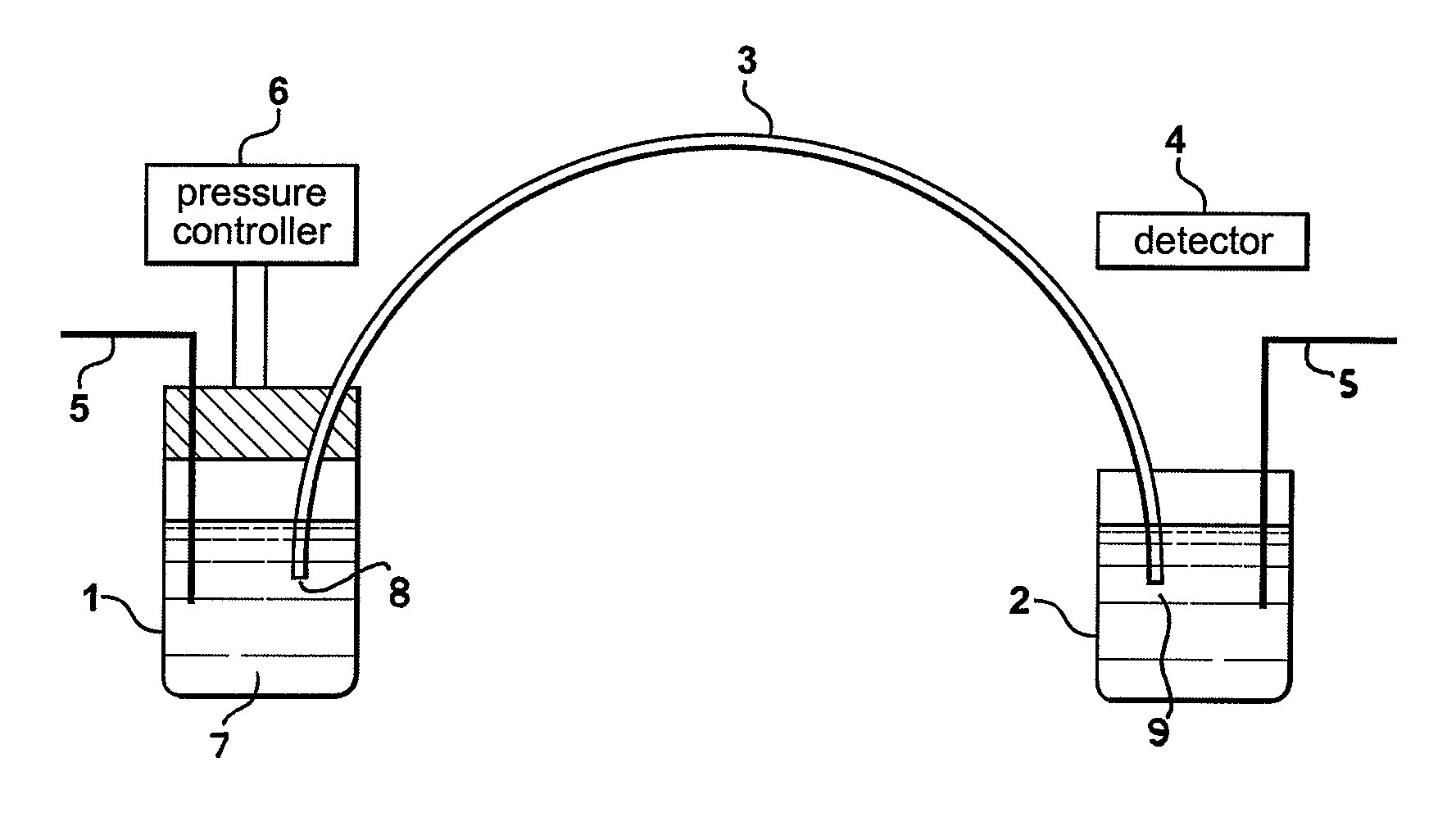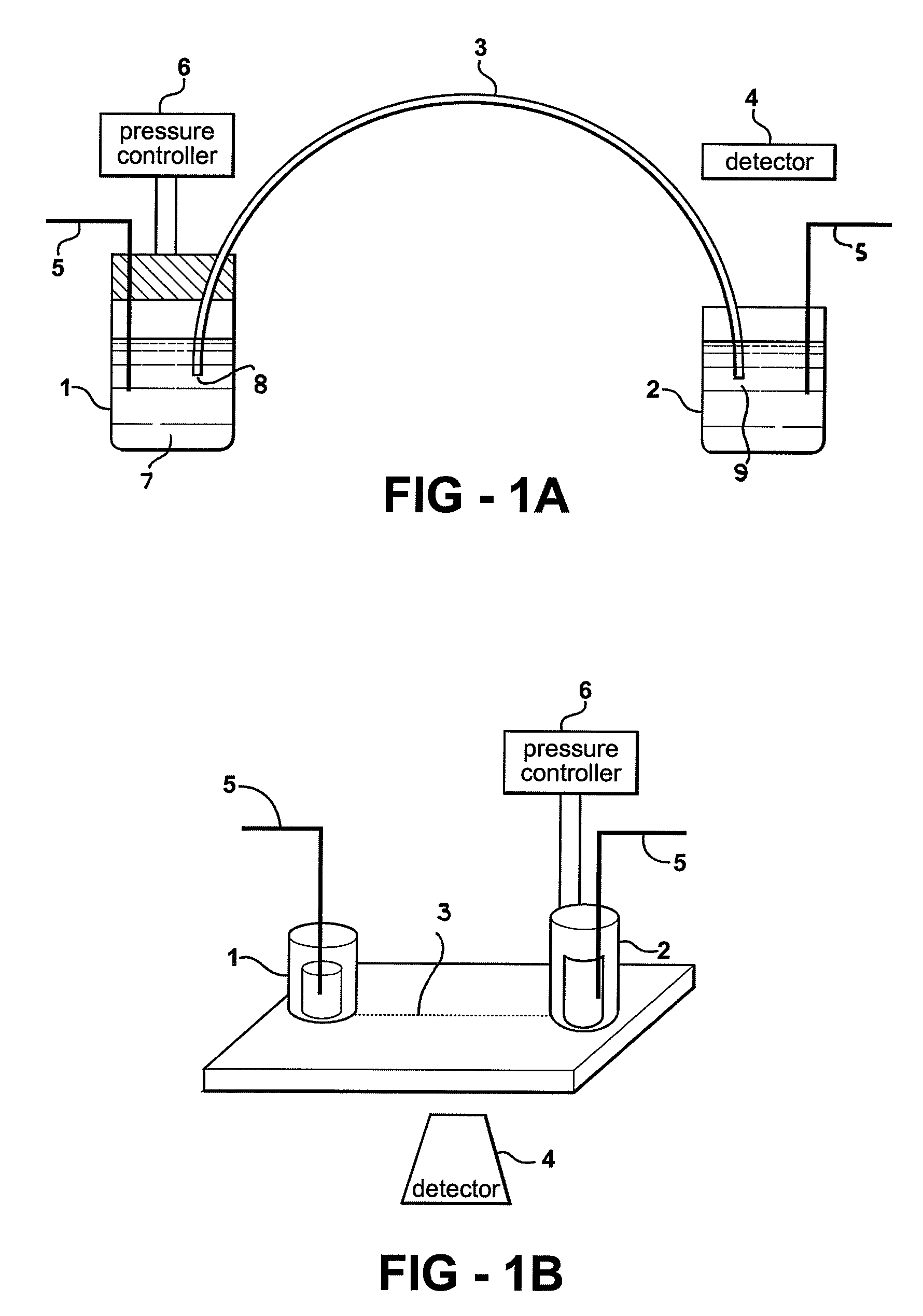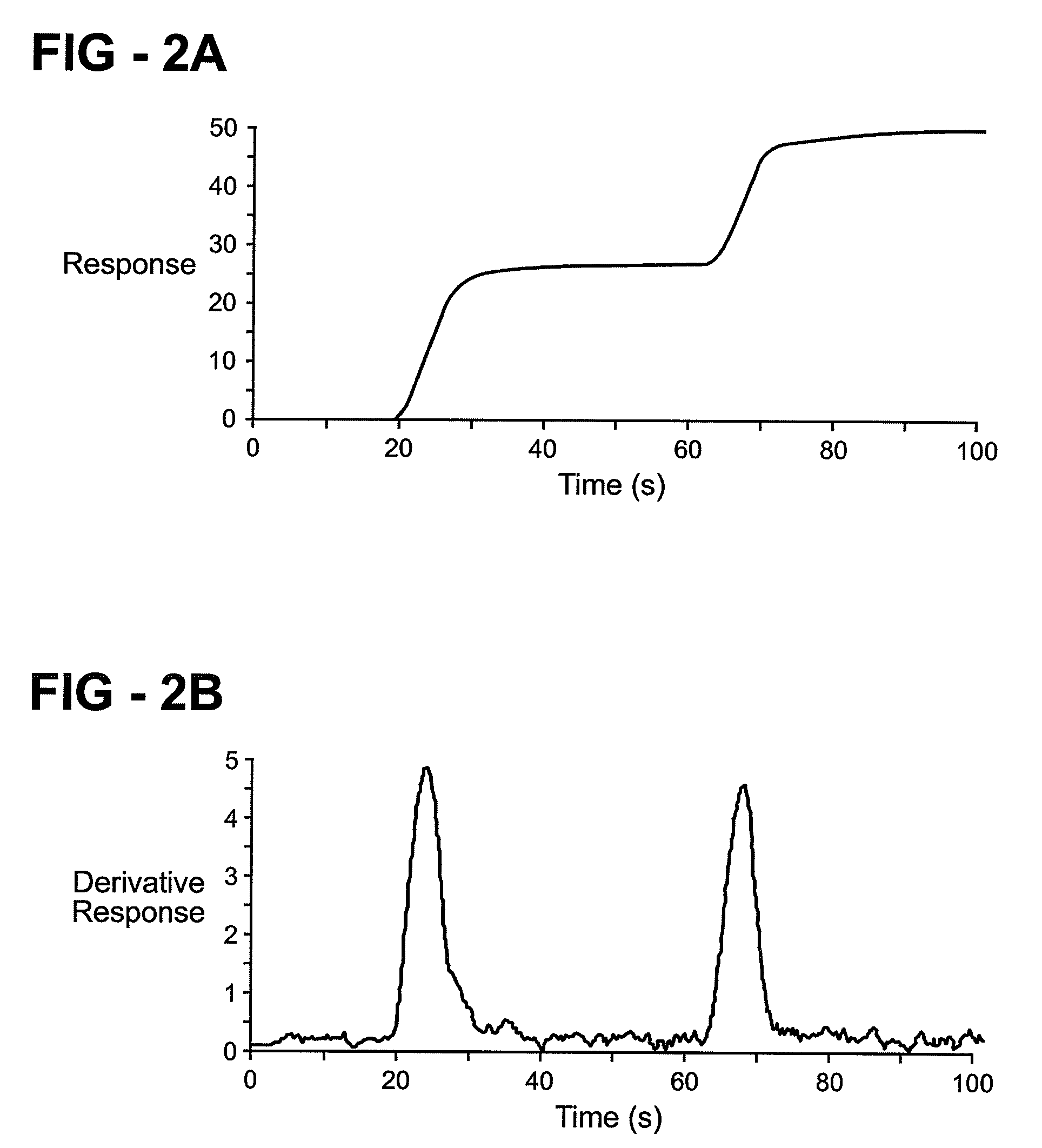Gradient elution electrophoresis
a technology of gradient elution and electrophoresis, which is applied in the direction of fluid pressure measurement, liquid/fluent solid measurement, peptide measurement, etc., can solve the problems of increasing the space required for implementing itp in a microfluidic, difficult to differentiate the continuous zone, and increasing the method of citp
- Summary
- Abstract
- Description
- Claims
- Application Information
AI Technical Summary
Benefits of technology
Problems solved by technology
Method used
Image
Examples
Embodiment Construction
[0042]The present invention incorporates a process for coupling continuous sample introduction with a variable hydrodynamic bulk flow for electrophoretic separations in a capillary, microfluidic channel, or other separation column. By changing the bulk flow velocity over time during the separation, analytes are sequentially eluted onto the separation column from the sample where they can individually be detected as zone boundaries. The present invention further provides a method for the enrichment and separation of the constituents of a sample mixture, which enrichment method can be used in conjunction with the process for coupling continuous sample introduction with a variable hydrodynamic bulk flow for electrophoretic separations in a capillary, microfluidic channel, or other separation columns.
[0043]The method can be applied to a capillary or microfluidic system. In this regard FIG. 1a is a schematic drawing of a capillary system that can be used according to one embodiment of th...
PUM
| Property | Measurement | Unit |
|---|---|---|
| outer diameter | aaaaa | aaaaa |
| outer diameter | aaaaa | aaaaa |
| length | aaaaa | aaaaa |
Abstract
Description
Claims
Application Information
 Login to View More
Login to View More - R&D
- Intellectual Property
- Life Sciences
- Materials
- Tech Scout
- Unparalleled Data Quality
- Higher Quality Content
- 60% Fewer Hallucinations
Browse by: Latest US Patents, China's latest patents, Technical Efficacy Thesaurus, Application Domain, Technology Topic, Popular Technical Reports.
© 2025 PatSnap. All rights reserved.Legal|Privacy policy|Modern Slavery Act Transparency Statement|Sitemap|About US| Contact US: help@patsnap.com



